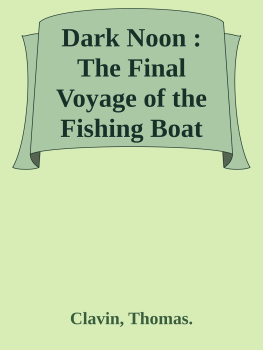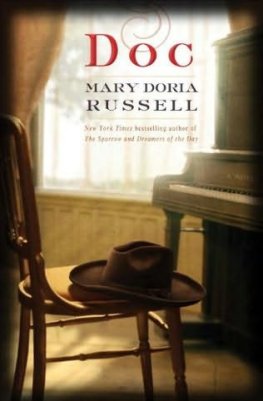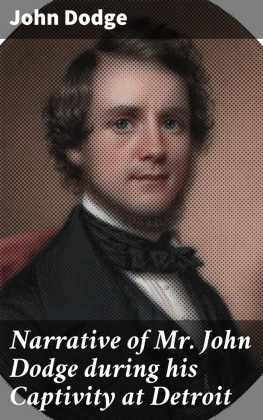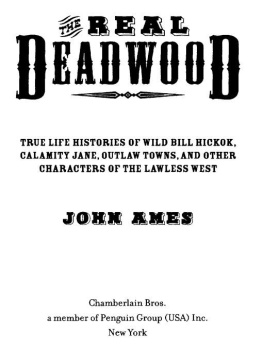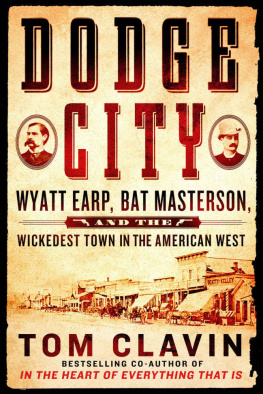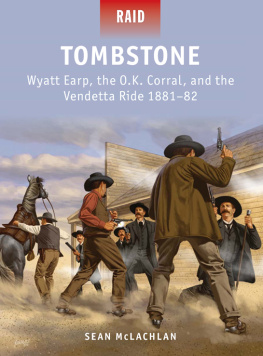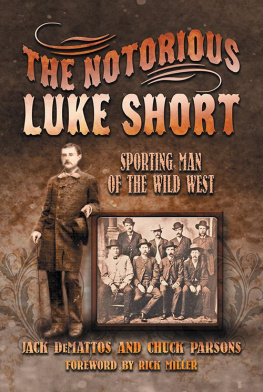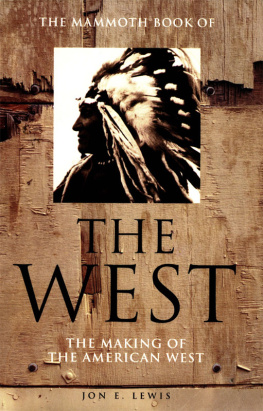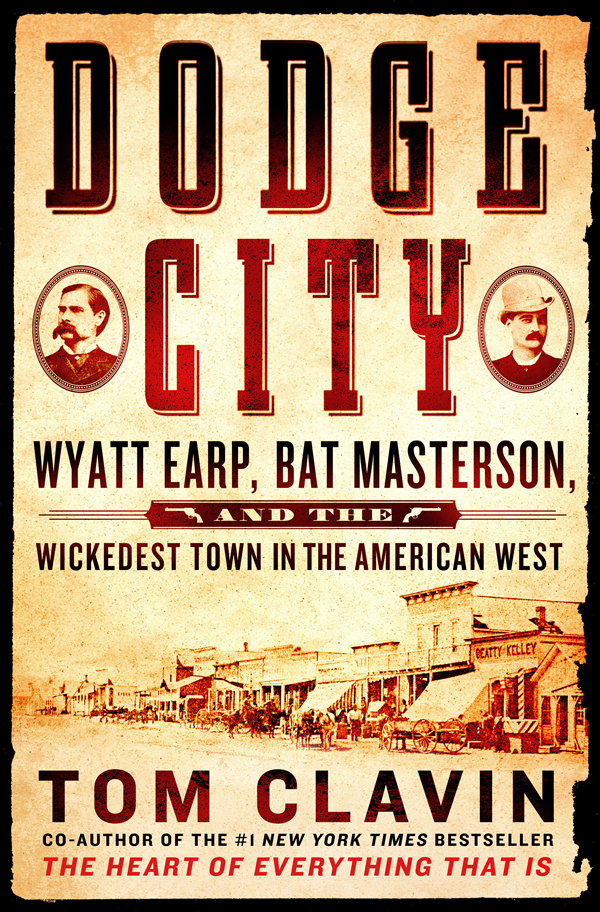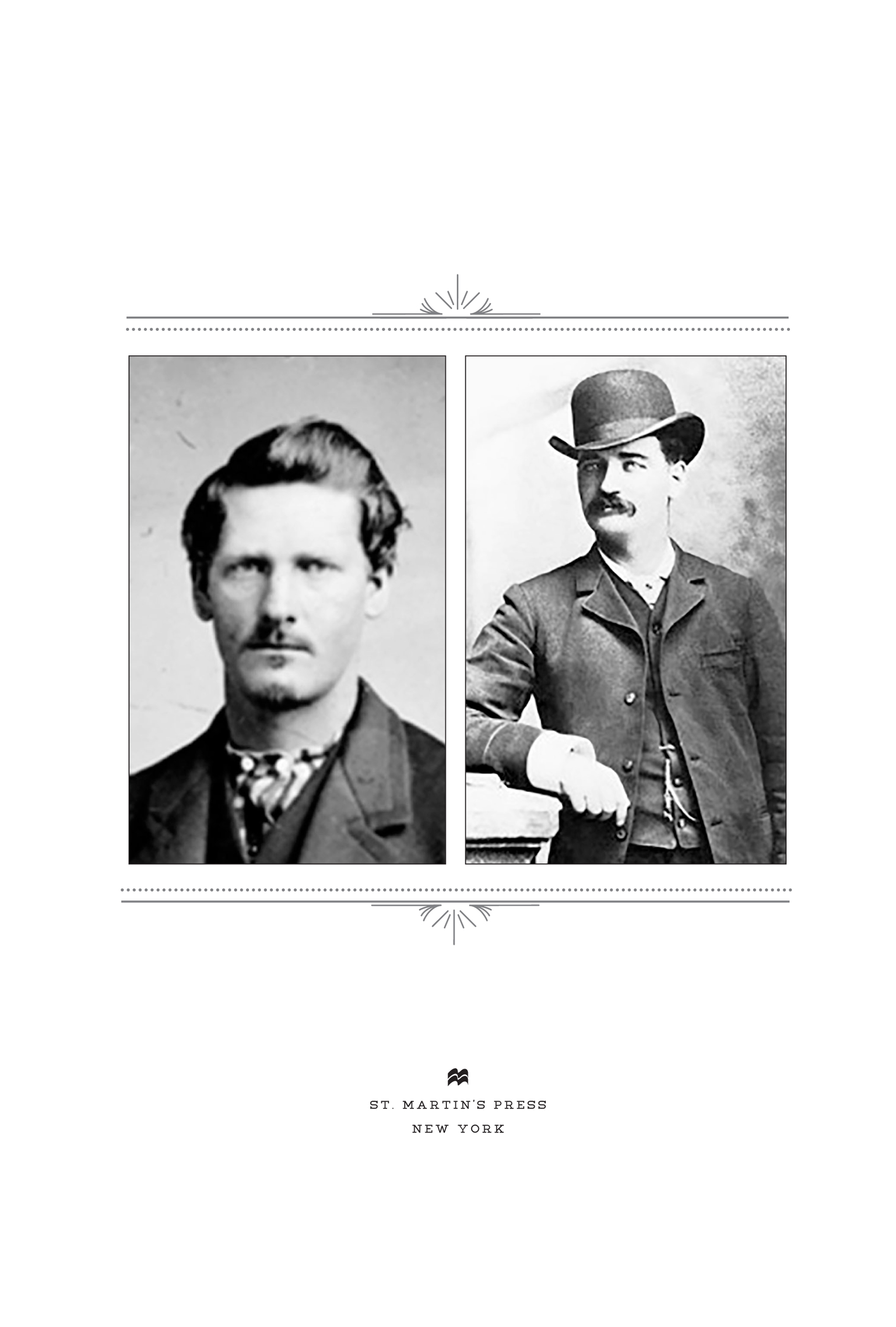
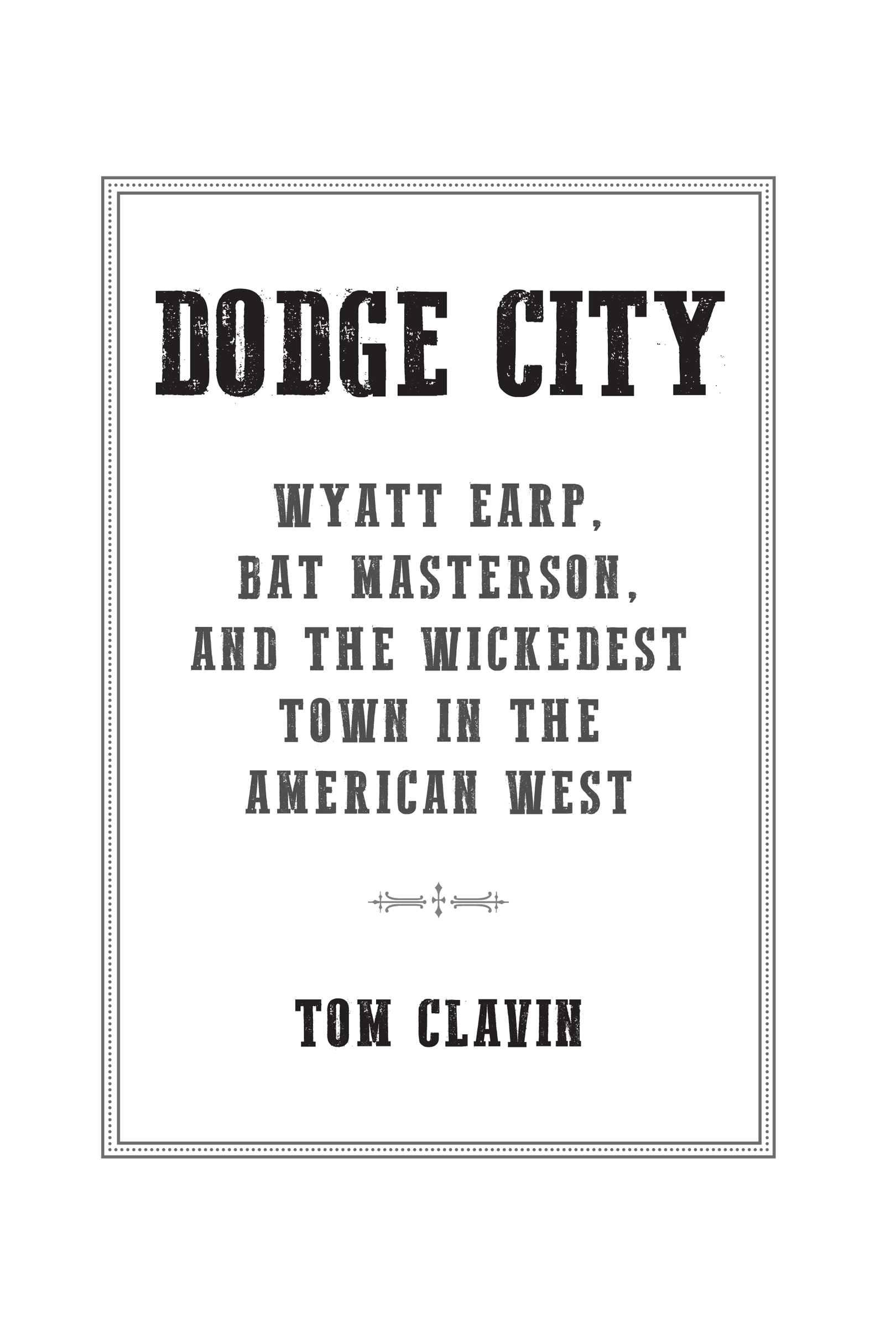
The author and publisher have provided this e-book to you for your personal use only. You may not make this e-book publicly available in any way. Copyright infringement is against the law. If you believe the copy of this e-book you are reading infringes on the authors copyright, please notify the publisher at: us.macmillanusa.com/piracy.
* Please note that some of the links referenced in this work are no longer active .
To Kathryn Clavin and James Vunkannon and their long life together
With Wyatt Earp, there is too much material, and with Bat Masterson, there is not nearly as much. To write about both, you hope to find a reliable middle ground you can hang your Stetson on.
There have been many books and films that feature Wyatt Earp and Bat Masterson. Almost all of the books are largely fiction, including the ones published as nonfiction. They contain exaggerations, embellishments, rumors, and outright falsehoods. The same goes for the onscreen efforts that began in 1932 with Walter Huston playing a character based on Wyatt Earp in Law and Order. The challenge for a writer today is to sift through all that has been done before to find the most reliable sources on both Wyatt and Bat and then tell how their stories intersected in Dodge City in the 1870s, where they became lifelong friends and met the one-of-a-kind characters who share many of those stories. Given what iconic figures these legendary lawmen are in American history and how over the years tall tales have stuck to them like barnacles on a boat, for me it was a challenge indeed.
As an individual subject, Wyatt Earp has been written about extensively. That would appear to be good news for an author taking a crack at a period in his life that has tended to be previously overlooked. Yes and no. While Wyatt had some notoriety during his lifetime, most of it was connected to the Gunfight at the O.K. Corral and the revenge ride that followed the shootings of his brothers Virgil and Morgan. Wyatt did not become a fully imagined legend of the Wild West until the publication of Wyatt Earp: Frontier Marshal in 1931, two years after his death. It sold briskly, even in the Depression, and Stuart Lakes biography would be the basis of movies and television episodesand, alas, most nonfiction books and articlesfor decades to come. Like Frontier Marshal, many such projects unashamedly played fast and loose with the facts. Even a classic motion picture like My Darling Clementine has Doc Holliday dying in the O.K. Corral gun battle, and Virgil Earp is not only portrayed as Wyatts younger brother but is killed before the brothers even get to the corral.
Frontier Marshal is packed with stories and reads like a darn good yarn. The award-winning western and mystery writer Loren D. Estleman considers it a pivotal work in the uniquely American process by which the common straw of history is spun into legendary gold. The problem is that some of the stories are inventions or at least embellishments. As Estleman immediately informs readers in his foreword to the 1994 edition of Lakes book, the books contents are less fact than fable. Thankfully, with some Wyatt Earp stories, over the years diligent and dedicated researchers have found that there are sound, solid sources of information. A handful of those authors, particularly Casey Tefertiller and Sherry Monahan, have written accurately and wonderfully about Wyatt and the Earp family. Wyatt himself, though, and later his fourth wife, Josephine (also known as Sadie), had other priorities than being reliable raconteurs. At times his own recollections or those of his contemporaries were the only foundations for what may or may not be tall tales. From the time that Lakes book was published, the expanding and burnishing legend of Wyatt Earp became more important than the real life of the man.
And there were those who wanted to do the opposite, to tear Wyatt down, to chip away at the statue of the most famous lawman of the American West while it was still being sculpted atop those faulty foundations. There were people who didnt like Wyatt or any of the other Earps or who simply were jealous enough of one western figure rising above the others that attacks were launched. As Estleman further explained, If, for example, Lakes undisguised admiration for his subject compels him to paint an impossible picture of Wyatt Earp as saint, Frank Waterss personal grudge against Earps widow moves him just as surely, in The Earp Brothers of Tombstone, to cast the lawman-entrepreneur in the equally untenable role of Antichrist.
As is usually the case in research, the truth lies somewhere in the middle. That is the course I have tried to steer when it comes to the lives and experiences of both Wyatt and Bat Masterson.
This writers life would have been easier if more had been previously written about Bat. Aside from scholarly articles published from time to time, there are only three main sources of information. One is a series of profiles of his contemporaries in the Old West, profiles that Bat himself wrote for a magazine and that were published as a collection in 1907 as Famous Gunfighters of the Western Frontier. They are colorful pieces indeed and should be, considering that Bat had led a colorful and adventurous life. But only some of what the profiles report is true. Bat relied primarily on his memory, and being in his fifties then, it was somewhat suspect, and to some extent he enjoyed the attention he received that was based more on legends than facts.
There are only two reputable, full-length biographies of Bat. The first, published in 1957, was written by Richard OConnor. It is credited with being the basis of the Bat Masterson television series, and it reads more like popular screen fare than serious scholarship. But at least OConnor tried to give Bat his due, and while the research is sketchy (beginning with Bats place of birth), there are more accurate ingredients than knee-slappers. The second and, to date, last biography is by the eminent historian Robert K. DeArment and was published in 1979. It does a much better job of offering a full portrait of Bat. DeArment did his best to meet the challenge of Bats life not being as well chronicled as Wyatts, and he regarded what had been written beforeone example being Bat credited with killing twenty-two men in gunfightsas being more harmful than helpful.
Of course, there are other sources to draw from when writing about Wyatt Earp and Bat Masterson and all the truths, legends, and lies about Dodge City in the 1870s. Many writers have emphasized the Wild West reputation of the city, and correctly so, because for a time in the 1870s no other city west of the Mississippi was more of a free-for-all of cowboys, gunfighters, gamblers, prostitutes, entrepreneurs, prospectors, and others just passing through.
Even now, not just in the United States but around the world, to hear someone say Dodge City immediately conjures up images of lawlessness and violence, corruption and roughriding men in black hats. This overlooks that there were men and women in Dodge City working to establish a more civilized life, and they hired lawmen like Wyatt and Bat and Charlie Bassett and Bill Tilghman and Ed and Jim Masterson to forge a system of frontier justice that would eventually create the West we know today. If these men had failed, the history of America in the late nineteenth century would have been quite different.


